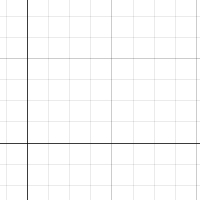First semester just finished here, and it’s a good time to reflect upon the success of the “flipped” lecture format I used often in Algebra 2, and will continue to use in AP Stats. My Stats colleague Joel started with flipping videos last year, and it has been a pleasure to work with him as we adapt to an updated textbook. We use videos for each section in Stats to deliver vocabulary and basic notes, so that class time is freed to work through explorations. Some reflections about my flipping experiences:
- Short and snappy is best. I strive to keep my videos at 10 minutes or less. I present one idea, with a few targeted examples.
- The videos have worked well in my classes, and students have come in with appropriate questions. This is not to say that all students watched the videos, but the message certainly got out that if a video was missed, you will be behind on the classroom conversation.
- Most of my videos feature just my voice, but lately I have been recording myself in front of the camera. There’s something odd about the dis-embodied voice in a video, and I think I will try to be live on camera as much as possible in the future.
- Making videos has caused me to have a sharp focus on objective. I try to keep the rambling to a minumum, although my “embedded secret word” has been popular, and caused me to give out many Jolly Ranchers. I also want students to feel comfortable re-watching videos, if they need. Keeping videos focused helps with this goal.
- Joel and I have used a few methods to assess that students have watched videos and taken notes. In our last video, Edmodo’s helpful quiz feature was used, but this caused issues for students who watched the video on a mobile device or ipad. I don’t want the assessment to be an albatross or another layer of unnecessary organization. Google forms and Camtasia quizzes were also employed, with mixed success.
- Getting ready to make a video often takes 3 times as long as making the video. Assembling notes, problems and preparing take time. And as wonderful technology is, one of my favorite videos was done with a webcam and index cards (see below).
I have used a number of tools to record my videos, but always publish to YouTube, and share the videos with the students on Edmodo.
DOCERI – this fun ipad app allows you to draw on the screen and record your finger strokes with voice. I have used this often for algebra problems. I am able to write the problem on the screen beforehand, and walk students through the work. Here’s one featuring Completing the Square.
SMART NOTEBOOK – I like using this tool, along with its recorder feature, for sections where there will be many definitions and details. I can have the pieces all ready to go, hidden, and bring them on screen when I need. Also, if a problem will require a good bit of writing, this format is ideal. Here’s one on Random Variables, from AP Stats.
SCREENCAST-O-MATIC – This screen recording tool was useful for guiding students through problems I had ready to go using the Desmos calculator. I didn’t use it often, but the interface is easy to use. The biggest problem with the videos I made with this tool was with the loud clicking from my mouse pad. Note to self – use a wireless mouse next time. This one features the graphs of logarithmic functions.
INDEX CARDS AND DRY-ERASE BOARDS – Yep, index cards. Recently, our school had a snow day. I was working on a script for a video on the geometric distribution, and was planning to use Smart Notebook. But it occurred to me that I had everything I needed at home: index cards, poker chips and a laptop with a webcam. YouTube’s editor allows captions to be included, which I used in this video on Sampling Distributions. Just have to work on lighting next time.

